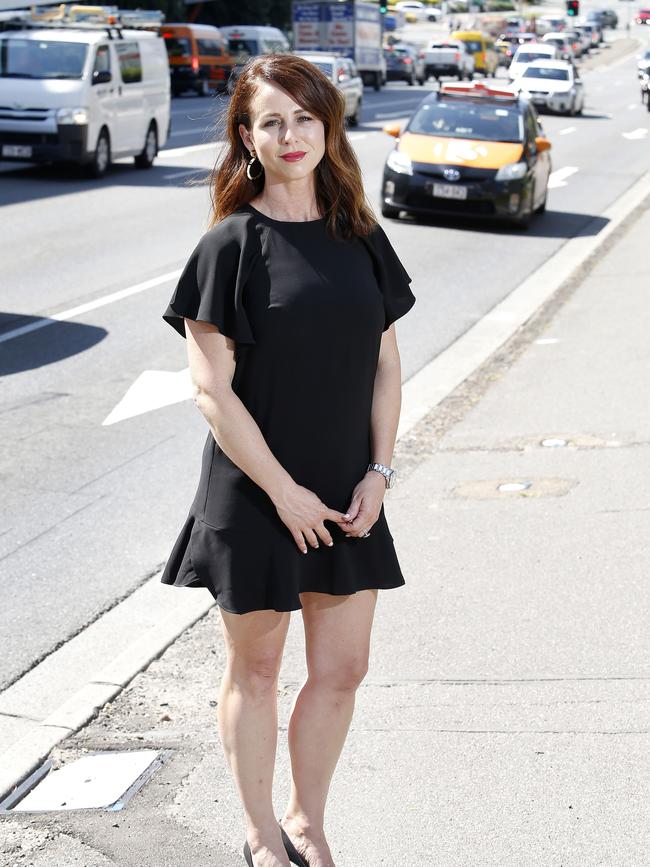City’s road congestion could be solved thanks to COVID-19
Before details of the traffic impact across Brisbane is truly known as restrictions continue to ease and more locals return to their workplaces, one traffic expert says the long-term future for peak hour commuters on our roads could be a very bright one.
Redlands Coast
Don't miss out on the headlines from Redlands Coast. Followed categories will be added to My News.
COVID-19 could change Brisbane roads forever.
Associate Professor Matthew Burke of Griffith University’s Cities Research Institute said the pandemic could leave a lasting impact on the city’s transport network in the long term if workers move to work from home permanently and more people embrace active transport.
“To me, there’s just been a dramatic change in the COVID-19 lockdown period,” Dr Burke said.
“With the universal shutdown, we lost a significant number of people using the transport system.”
The unprecedented drop in daily commuters, now working from home instead of the office in response to COVID-19, meant roads were quieter than they had been in decades.
Dr Burke said even a one-in-six car reduction on the roads after COVID-19 would significantly change Brisbane’s peak hour traffic flow.
“What’s really uncertain is whether these people will continue to work from home... and if they do, it will be a major game changer for Australian traffic congestion.
“If firms start to say we’re very happy with (staff) working from home, that could put a really big dint in traffic levels.
Notorious Brisbane road gets $30 million upgrade
Park gives kids taste of road rules
“I’m hopeful this is the first real sign of the decentralisation of the office workforce.”
The reduction in traffic could help solve the ever-growing length of commute in what is a city that is extremely spread out.
“Australian cities have a particularly bad transport and land use relationship,” Dr Burke said.
He said workers, especially lower income earners priced out of inner-city real estate markets needed to travel exceptionally long distances to work each day — with a growing portion travelling 90 minutes each way.
“People are trading off a very long commute... for affordable housing,” he said.
“There’s a lot of distance between people’s homes and their main activities.
“So COVID has been a really large shake up to this.

Dr Burke said an increase in people walking and cycling to work was also expected.
“I think we’ll see cycling really grow within the city because it offers... a COVID-safe means of transport.
“Scooters will be another replacement to public transport.”
He said cities like London, New York and Shanghai were already seeing these changes.
He said reduction in cars on the city’s roads was also to the benefit of public transport users.
“It’s amazing how fast a bus goes when it doesn’t have to stop for traffic,” Dr Burke said.
He said he hoped, in the face of COVID-19, to see a move towards requiring all passengers on public transport to wear face masks. But that will require increased availability of masks in shops. “There is nothing I have seen to say this is not a good idea,” he said.

Meanwhile, RACQ data has revealed the average April peak hour speed on key roads has doubled due to COVID-19 traffic reductions, setting commuters up to really feel the sting once more people resume the daily drive.
RACQ Head of Public Policy Rebecca Michael said infrastructure upgrades were still needed to improve capacity, offer alternatives and relieve congestion for the population however it was tricky to tell how many people would return to the office full-time.
“Predicting where overall traffic volumes and congestion will end up in the long term is difficult, as peak hour traffic volumes may be reduced through staggered work start and finish times and working from home initiatives, while limits on passenger numbers on public transport may be offset by an increase in walking and cycling trips and proposed increases in bus and rail service frequency,” she said.
Southside roads that could choke up after COVID-19
Pacific Motorway: Greenslopes into the City
Pacific Motorway/Gateway Motorway: Daisy Hill to Eight Mile Plains, start of upgrade project.
Wynnum Rd, Norman Park and Morningside: ongoing roadworks.
Northside roads that could choke up after COVID-19
Kingsford Smith Drive, Hamilton: ongoing roadworks.
Stanley Street, Woolloongabba
Hale Street / Coronation Drive
Centenary Motorway, Ipswich to Toowong
These are major traffic and freight corridors that carry significant volumes of traffic over and above their current capacity at peak times, which leads to congestion.


